مقدمة
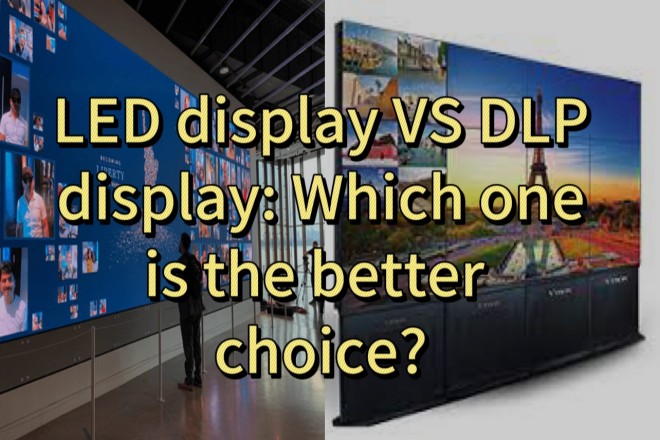
في تكنولوجيا العرض الحديثة، يعرض الصمام وتتمتع شاشات DLP بمزاياها الخاصة، واختيار أي منها غالبًا ما يجعل الناس يترددون.
تشتهر تقنية LED بالتوصيل السلس والسطوع العالي، في حين تشتهر تقنية DLP بالتباين العالي وجودة الصورة الدقيقة. ستقارن هذه المقالة بين الاثنين بإيجاز لمساعدتك على اتخاذ قرار مستنير.
1. ما هي مزايا شاشة LED؟
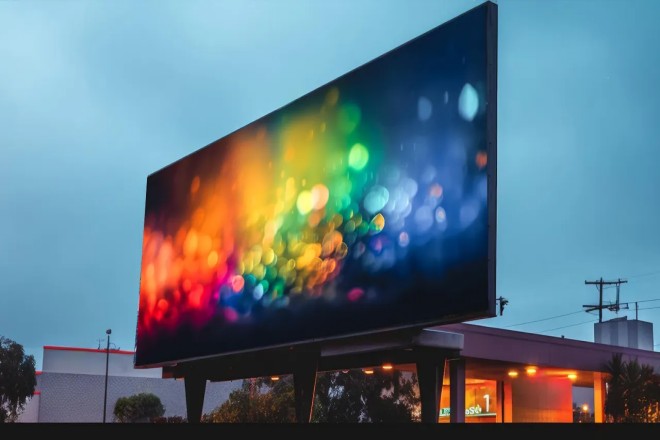
شاشة العرض LED، ببساطة، هي شاشة مسطحة كبيرة تتكون من العديد من حبيبات مصباح LED (الصمام الثنائي الباعث للضوء) الصغيرة.
يمكن لمصابيح LED هذه أن تصدر ضوءًا بألوان مختلفة. ومن خلال التحكم الدقيق والترتيب، يمكن دمجها في صور أو نصوص أو مقاطع فيديو، مما يمنحنا تجربة بصرية ملونة.
1) شرح مفصل للمزايا:
- معجزة الوصل السلس:
تخيل أن لديك شاشة كبيرة جدًا، لكنها تتكون من العديد من القطع الصغيرة ذات الفجوات الواضحة في المنتصف. سيبدو الأمر غريبًا. ومع ذلك، فإن شاشة LED مختلفة، ويمكنها تحقيق توصيل سلس حقًا.
وهذا يعني أنه مهما كان حجم الشاشة، فإنها ستبدو وكأنها شاشة كاملة بدون أي فجوات أو ثغرات. ويظهر هذا التأثير بشكل واضح بشكل خاص في الفعاليات الضخمة أو الحفلات الموسيقية أو شاشات العرض في مراكز التسوق، مما يمنح الناس تجربة بصرية مذهلة.
- سطوع كما تريد:
يمكن تعديل سطوع شاشة LED، ونطاق سطوعها واسع جدًا. سواء في ضوء الشمس الساطع أو في غرفة مظلمة، يمكن لشاشة LED الحفاظ على تأثير عرض واضح.
يرجع ذلك إلى أن حبات مصباح LED نفسها يمكنها إصدار ضوء قوي، كما أن ضوءها موجه للغاية ويمكن أن يضيء مباشرة في عيون الجمهور. لذلك، بغض النظر عن البيئة التي تشاهد فيها، يمكن لشاشة LED أن تجلب لك تجربة بصرية واضحة.
- عمر طويل وسهولة الصيانة:
تتمتع شاشات LED بعمر خدمة طويل للغاية، يصل عمومًا إلى عشرات الآلاف من الساعات. وهذا يعني أنه بمجرد شراء شاشة LED، يمكنك الاستمرار لفترة طويلة دون القلق بشأن تعطلها أو احتياجها إلى صيانة متكررة.
علاوة على ذلك، نظرًا لأن حبات مصباح LED تتمتع بعمر طويل، فإن شاشة العرض بأكملها مستقرة جدًا ولا تتعرض للفشل. وهذا يوفر لنا الكثير من الوقت والمال ويسمح لنا بالتركيز على أشياء مهمة أخرى.
2. ما هي مزايا شاشة DLP؟
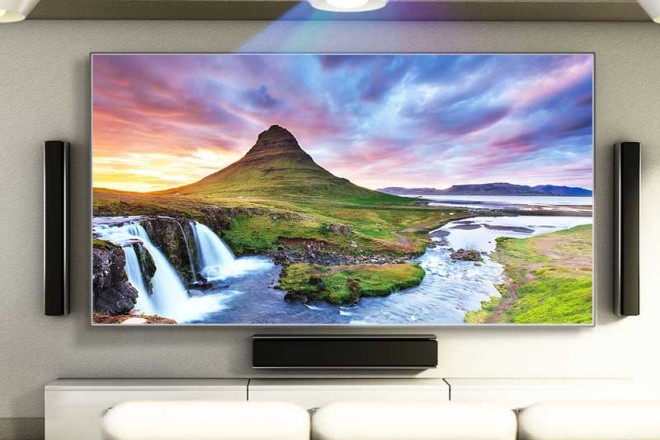
DLP، اختصار "معالجة الضوء الرقمية"، يعني تقنية معالجة الضوء الرقمية. إنها تقنية تستخدم مجموعة من المرايا الدقيقة (DMD، جهاز المرايا الدقيقة الرقمية) للتحكم في الضوء وتكوين صورة.
تعمل هذه التقنية أولاً على معالجة إشارة الصورة رقميًا، ثم تقوم بإسقاط الضوء من خلال مجموعة من المرايا لتشكيل الصورة التي نراها.
1) شرح مفصل للمزايا:
- تباين عالي، وعرض صور دقيقة:
تتميز تقنية DLP بالقدرة على توفير درجات لون أسود أعمق وتفاصيل أدق للصورة، وذلك بفضل مبدأ الإسقاط العاكس وتقنية إدارة الألوان المتقدمة.
عندما يمر الضوء عبر شريحة DMD، فإن الضوء المنعكس فقط هو الذي سيدخل إلى مجال رؤيتنا، بينما سيتم امتصاص الضوء غير المنعكس أو تشتته، وبالتالي تقليل تأثير الضوء الضال.
يتيح هذا التصميم لشاشة DLP تقديم تباين أعلى وتفاصيل أكثر ثراءً عند عرض الصور ومقاطع الفيديو عالية الجودة، مما يجعل الصور أكثر حيوية وواقعية.
- استجابة سريعة ومناسبة للعرض الديناميكي:
تتميز شاشة DLP بسرعة استجابة عالية جدًا، وذلك بفضل قدرة شريحة DMD على التبديل بسرعة. يمكن للمرايا الدقيقة الموجودة على كل شريحة DMD تبديل الحالات بسرعة في وقت قصير لتحقيق التحكم الدقيق في الضوء.
تتيح قدرة التبديل عالية السرعة هذه لشاشة عرض DLP تقديم تأثير صورة أكثر سلاسة وتماسكًا عند عرض الفيديو الديناميكي والبيانات في الوقت الفعلي، مما يتجنب مشكلة تجميد الصورة أو تأخيرها.
- ألوان دقيقة واستعادة المشاهد الحقيقية:
تتمتع تقنية DLP بمزايا كبيرة في إعادة إنتاج الألوان، فهي تستخدم نظام إدارة ألوان متقدم وتقنية تصحيح الألوان لضمان عرض لون كل بكسل بدقة على الشاشة.
تتيح دقة الألوان هذه لشاشات DLP تقديم أداء ألوان أكثر واقعية وطبيعية عند عرض الصور ومقاطع الفيديو الملونة، مما يجعل المشاهدين يشعرون وكأنهم في مشهد حقيقي.
- عمر طويل وتكاليف صيانة منخفضة:
عمر خدمة شاشات العرض DLP طويل نسبيًا، ويصل عمومًا إلى عشرات الآلاف من الساعات. ويرجع ذلك إلى تقنية معالجة مصدر الضوء المتقدمة وتصميم تبديد الحرارة.
أثناء الاستخدام طويل الأمد، يمكن لشاشة العرض DLP الحفاظ على أداء مستقر وتأثيرات عرض واضحة، وبالتالي تقليل تكرار وتكلفة الصيانة والاستبدال.
3. مقارنة بين الاثنين من حيث المعايير الفنية والأداء
فيما يلي مقارنة تفصيلية للمعايير الفنية وأداء شاشات العرض LED وشاشات DLP، بهدف مساعدة القراء على اكتساب فهم أعمق للاختلافات والمزايا المتبادلة بين الاثنين:
1). دقة
- شاشة ربط DLP:
الدقة عالية، ويمكن أن تصل دقة شاشة DLP الشائعة إلى 1920×1080 بكسل، مما يضمن صورًا عالية الدقة.
تعتمد القيمة المحددة للدقة على عدد وتكوين وحدات DLP. يمكن للمستخدمين اختيار الدقة المناسبة وفقًا لاحتياجاتهم.
- عرض الصمام:
يتم تحديد الدقة من خلال المسافة بين النقاط. كلما كانت المسافة بين النقاط أصغر، زاد عدد البكسلات لكل وحدة مساحة وزادت الدقة.
تتميز شاشة LED ذات الملعب الصغير بوضوح خاص عند مشاهدتها عن قرب، كما أن تأثير العرض الدقيق الخاص بها قادر على تلبية احتياجات عرض الصور والفيديو عالية الدقة والدقيقة.
2) السطوع
- شاشة ربط DLP:
السطوع معتدل، ويتراوح عمومًا بين 700 و1500 لومن ANSI، وهو ما يكفي لتلبية احتياجات الاستخدام في البيئات الداخلية العامة.
في البيئات الداخلية المظلمة، يكون أداء سطوع شاشات DLP جيدًا بشكل خاص، ويمكنها عرض الصور بألوان زاهية وصور واضحة.
- عرض الصمام:
تتمتع شاشة LED بدرجة سطوع عالية للغاية، وعادة ما تكون أعلى من 2500cd/m²، مما يسمح لشاشة LED بالحفاظ على تأثير عرض واضح في الهواء الطلق أو في بيئة داخلية مشرقة.
يمكن تعديل سطوع شاشة LED تلقائيًا وفقًا للضوء المحيط لضمان أفضل تأثير للمشاهدة.
3) فجوات الوصل
- شاشة ربط DLP:
فجوة الوصل صغيرة، وعادة ما تكون حوالي 0.5 مم، مما يساعد على تحقيق تأثير وصل سلس.
ومع ذلك، بسبب القيود المفروضة على طريقة توصيل شاشات توصيل DLP، فإن فجوات التوصيل قد يكون لها تأثير معين في بعض المواقف حيث تكون متطلبات الفجوة عالية للغاية.
- عرض الصمام:
يمكن تحقيق تأثير الوصل السلس تمامًا لأن شاشة العرض LED تتكون من حبات مصباح LED فردية، والتي يمكن وصلها بسلاسة من خلال الترتيب الدقيق والمعايرة.
يوفر تأثير الوصل السلس للجمهور تجربة بصرية مثالية، وهو مناسب بشكل خاص للمناسبات التي تتطلب شاشة عالية الدقة وكبيرة المساحة.
4) مقارنات الأداء الأخرى
- مقابلة:
تتراوح نسبة التباين لشاشات DLP عادةً بين 1300 و2000، مما يضمن أن الصورة تحتوي على تدرجات غنية من الأسود إلى الأبيض ومستويات ألوان أكثر ثراءً.
تتميز شاشات LED بنسبة تباين أعلى، وعادة ما تكون أعلى من 5000:1، مما يجعلها أكثر وضوحًا عند عرض التفاصيل السوداء والداكنة.
- دقة الألوان:
تتمتع شاشات DLP الوصلية بمزايا في إعادة إنتاج الألوان ويمكنها توفير أداء ألوان أكثر واقعية وطبيعية.
دقة الألوان في شاشات LED عالية أيضًا، ولكنها قد تتأثر بعوامل مثل السطوع ودرجة حرارة اللون.
- خدمة الحياة:
تعتبر مدة خدمة شاشات الوصل DLP طويلة نسبيًا، ولكن عمر الخدمة المحدد يعتمد على عمر مصدر الضوء واستقرار النظام.
إن عمر خدمة شاشات LED أطول، ويصل عمومًا إلى عشرات الآلاف من الساعات، وذلك بفضل العمر الطويل وخصائص التوهين المنخفضة لخرزات مصباح LED.
4. تحليل الاثنين من سيناريو التطبيق
1) سيناريوهات تطبيق شاشات العرض LED
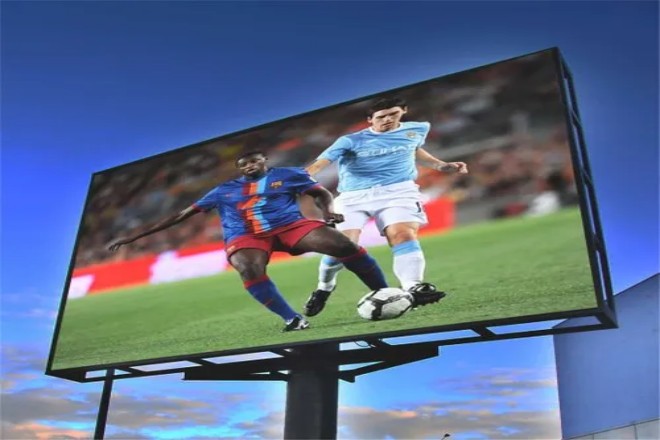
1.1) مجال وسائل الإعلان الخارجي:
- الشوارع المزدحمة:
بسبب سطوعها العالي ومقاومتها للعوامل الجوية، تعد شاشات LED مناسبة جدًا لعرض الإعلانات في الشوارع المزدحمة لجذب انتباه المارة.
يمكن استخدام شاشات LED داخل مراكز التسوق أو خارجها لعرض المعلومات الترويجية وإعلانات العلامات التجارية وما إلى ذلك، لتعزيز تجربة التسوق.
- الساحات والحدائق:
في الأماكن العامة مثل الساحات والمتنزهات، يمكن استخدام شاشات LED لبث إعلانات الخدمة العامة والعروض الترويجية الثقافية وغيرها من المحتوى لإثراء الحياة الثقافية للمواطنين.
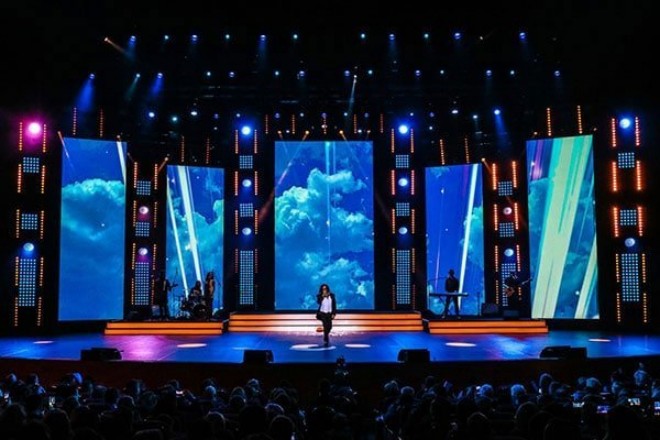
1.2) مجال الترفيه والثقافة:
- منصة أداء:
يمكن استخدام شاشة LED كخلفية للمسرح لعرض الصور ومقاطع الفيديو المتعلقة بمحتوى الأداء لتعزيز تأثير المسرح.
- حفلة موسيقية:
في الحفل الموسيقي، يمكن استخدام شاشة LED الكبيرة لبث الصور الحية والتفاعل مع الجمهور والمحتوى الآخر في الوقت الفعلي لتعزيز شعور الجمهور بالمشاركة والانغماس.
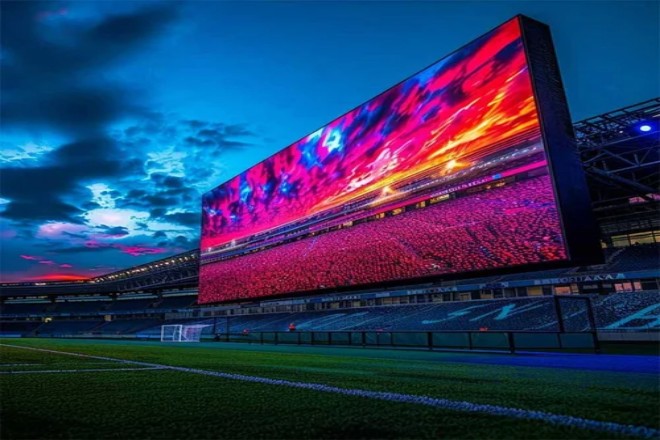
1.3). رياضات مجال:
- الأماكن الرياضية:
يمكن استخدام شاشات LED لعرض النتائج ووقت المباراة ومعلومات اللاعب وما إلى ذلك، مما يوفر معلومات واضحة عن اللعبة للجمهور.
- إعادة تشغيل الحركة البطيئة:
في الأحداث الرياضية، يمكن أيضًا استخدام شاشات LED لتشغيل إعادة التشغيل بالحركة البطيئة، مما يسمح للجمهور برؤية أبرز أحداث اللعبة بشكل أكثر وضوحًا.
2) سيناريوهات تطبيق شاشات العرض DLP
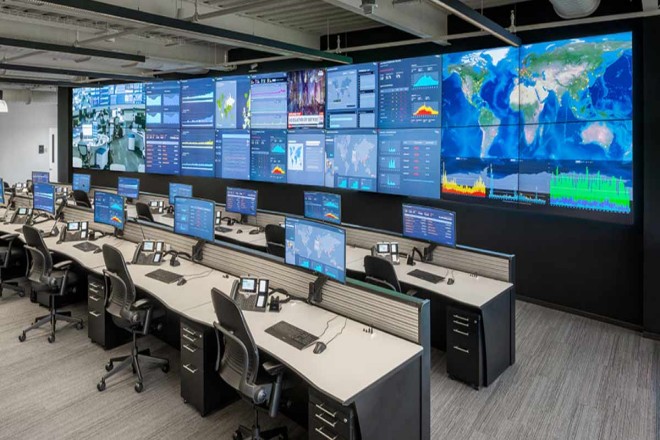
2.1). مركز القيادة والمراقبة، مركز إدارة الشبكة:
شاشة العرض DLP ذات الدقة العالية والسطوع العالي والتشبع اللوني العالي، مناسبة جدًا للاستخدام في مراكز القيادة والمراقبة ومراكز إدارة الشبكة.
تتطلب هذه المناسبات عرض كمية كبيرة من البيانات والمعلومات. ويمكن لشاشات DLP ضمان وضوح المعلومات وسهولة قراءتها وتوفير أساس دقيق لصناع القرار.
2.2). التصوير الطبي:
في المجال الطبي، يمكن استخدام شاشات DLP لعرض الصور الطبية، مثل الأشعة السينية، والتصوير المقطعي المحوسب، وما إلى ذلك. تساعد الدقة العالية ودقة الألوان الأطباء على تشخيص الحالات بشكل أكثر دقة.
- الاختبار الصناعي:
في مجال التفتيش الصناعي، يمكن استخدام شاشات DLP لعرض صور وبيانات صناعية دقيقة، مما يساعد المهندسين والفنيين على تحليل المشكلات وحلها بشكل أفضل.
- نظام عرض المعلومات على الزجاج الأمامي للسيارات (HUD):
يمكن أيضًا استخدام تقنية DLP في أنظمة العرض الأمامية للسيارات لعرض المعلومات الرئيسية مثل معلومات الملاحة وسرعة السيارة على الزجاج الأمامي لتحسين سلامة القيادة وراحتها.
5. كيف تختار بين شاشة LED وشاشة DLP؟
عند الاختيار بين شاشات LED وشاشات DLP، عليك مراعاة عدة عوامل، بما في ذلك سيناريوهات التطبيق والدقة والسطوع وفجوات التوصيل ودقة الألوان وعمر الخدمة والتكلفة. فيما يلي تحليل شامل لهذه العوامل لمساعدتك في اتخاذ قرار مستنير:
1) سيناريوهات التطبيق
1.1). شاشة LED:
وسائل الإعلان الخارجية: مثل الشوارع المزدحمة ومراكز التسوق والساحات والمتنزهات وما إلى ذلك، مناسبة جدًا لسطوعها العالي ومقاومتها للعوامل الجوية.
مجال الترفيه والثقافة: مثل العروض المسرحية والحفلات الموسيقية وما إلى ذلك، يمكن استخدامها كشاشة خلفية كبيرة لتوفير تأثيرات بصرية ملونة.
الملاعب الرياضية: مثل عرض النتائج وإعادة عرض الأحداث بالحركة البطيئة في الملاعب الرياضية، مما يوفر للجمهور معلومات شاملة عن اللعبة.
1.2). شاشة DLP:
مركز القيادة والمراقبة: يوفر شاشة كبيرة ومتعددة الألوان وعالية السطوع وعالية الدقة، مناسبة لعرض كميات كبيرة من البيانات والمعلومات.
التصوير الطبي: يستخدم لعرض الصور الطبية، مثل الأشعة السينية، والأشعة المقطعية، وما إلى ذلك، وهي مشهورة بدقتها العالية ودقة ألوانها.
أنظمة التفتيش الصناعي وشاشة العرض الأمامية للسيارات (HUD): توفر حلول تصور احترافية لمساعدة المهندسين والفنيين على تحليل المشكلات وحلها بشكل أفضل.
2) التكلفة والصيانة
- يكلف:
تنخفض تكلفة شاشات LED تدريجيًا مع التقدم المستمر للتكنولوجيا، لكن تكلفة شاشات LED الصغيرة عالية الجودة لا تزال مرتفعة.
تعتبر تكلفة شاشات DLP منخفضة نسبيًا، ولكن السعر المحدد يعتمد على عدد وتكوين وحدات DLP المستخدمة.
- يحافظ على:
تعتبر صيانة شاشات LED بسيطة نسبيًا، وتتضمن بشكل أساسي التنظيف والفحص واستبدال حبات المصباح التالفة.
قد تتضمن صيانة شاشات DLP استبدال المصابيح الكهربائية، وضبط الأنظمة البصرية، وما إلى ذلك، وهو أمر معقد نسبيًا.
خاتمة
تتمتع كل من شاشات LED وشاشات DLP بمزاياها الخاصة، ويعتمد اختيار التكنولوجيا على احتياجات التطبيق المحددة والميزانية وتكاليف التشغيل على المدى الطويل.
ومع استمرار تطور التكنولوجيا، قد تصبح الحدود بين الاثنين غير واضحة بشكل متزايد، وقد تظهر في المستقبل تقنيات عرض أكثر ابتكارًا تدمج مزايا كل منهما.
وأخيرًا، إذا كنت تريد معرفة المزيد من المعلومات حول شاشات LED، يرجى الحصول على اتصال معنا.
